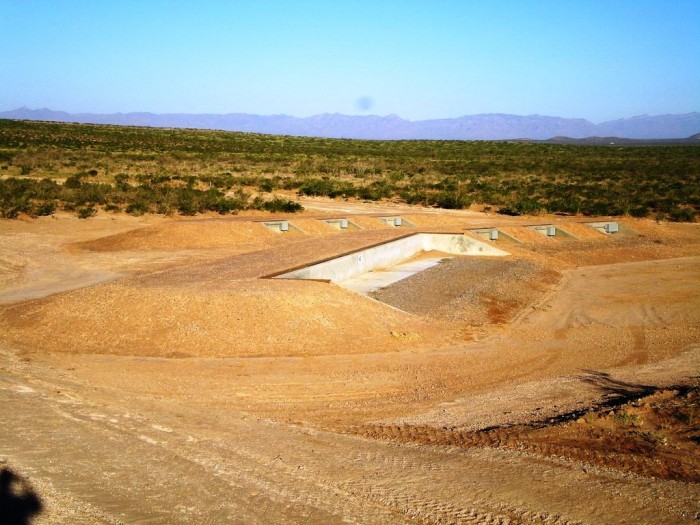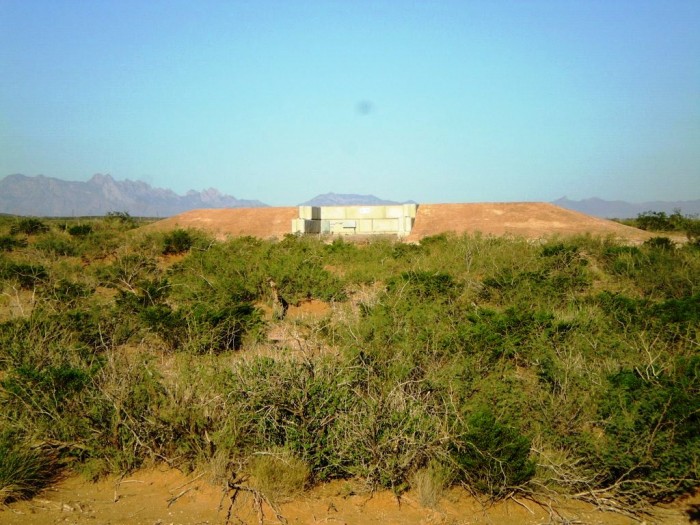
Sundt is nearing completion of the U.S. military’s first fully computerized target practice range at Fort Bliss Army Post, Texas, a high-profile project called DAGIR, which stands for Digital Air-Ground Integration Range. The $31.6 million heavy civil project, which will wrap up prior to Thanksgiving, included construction of 23 miles of tank trails, installation of 200 pre-cast concrete targets, and construction of six support buildings. The facility will be used to train U.S. soldiers and the armies of several U.S. allies for combat missions on the ground and from the air.
“This is a premier facility that will become a model for other such digital ranges around the country,” said Sundt Area Manager Fred Stone. “It’s high-tech, high-security, fast-tracked – you name it, it’s challenging. Sundt has an excellent track record of performing well under all of these conditions for the federal government, including at Fort Bliss, which factored into our being awarded the job.”
What makes the range unique is the fact that the targets are controlled digitally, which allows for the creation of unlimited combat scenarios. Sensors in the targets and the vehicles gather information that then becomes part of the review and feedback process. After soldiers complete a simulated mission on the range, they return to the After Action Review (AAR) building to view a recording and debrief with their superiors.

Sundt’s ability to self-perform all of the concrete work played an instrumental role in helping the team manage the tight schedule. Nearly 11,000 concrete blocks, each measuring 2x2x6 feet, were cast using an efficient assembly line approach that boosted productivity rates by more than 30 percent over what was originally projected.
The project’s location posed another challenge. It sits within a large parcel of undeveloped land that was used for target practice leading up to and during World War II. Because of its remote location and relatively open air space, it’s ideal for training missions, with one catch: an unknown amount of live ordinance is still scattered throughout the area. Even though the project site itself was cleared prior to Sundt’s arrival, the situation adds an additional layer of security that has affected the team’s daily operations.
“We have a very limited workspace that requires a lot of careful planning. You can’t just wander around out there,” said Stone. “If anyone deviates outside of the project boundaries, and lives to tell about it, they’ll be escorted off the base immediately. We have had to be very careful about respecting security measures – for our own safety as well as to protect the sensitive nature of what occurs there.”